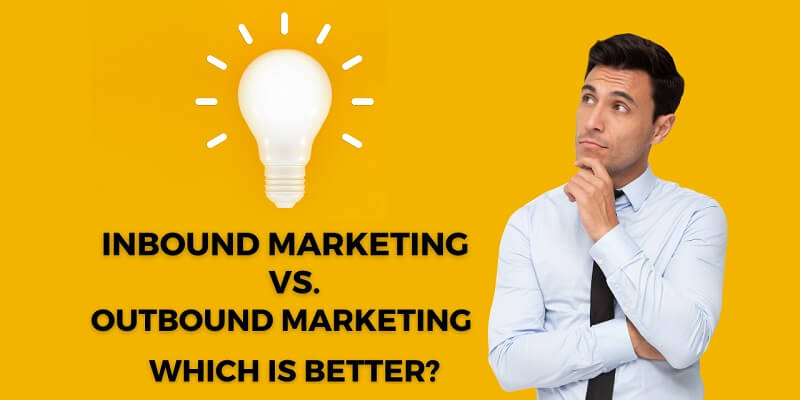Do you want to know What is inbound marketing vs outbound marketing examples? This guide will help you understand the differences and determine which one is right for your business. So keep reading.
As a business owner you have likely heard the terms ‘inbound’ and ‘outbound’ marketing many times before, but what do they actually mean? And more importantly…which is better? In this article, we’ll pit both strategies against one another and see if we can find a clear winner.
What is outbound marketing?
Outbound marketing will likely be the strategy that you are most familiar with as it is the most ‘conventional’. Whenever you walk past a billboard, scroll past an ad on Facebook, hear a commercial on the radio, or have a brochure shoved in your hand on the street; these are all forms of outbound marketing.
Another term for it is ‘push marketing’, whereby the brands come to you.
While outbound marketing does sometimes get a bit of a bad rap (when done poorly); the numbers do not lie; it’s a valuable form of marketing and should not be neglected.
What is inbound marketing?
Inbound marketing, as you may have already guessed by now, is when the customers come to you. But, how? And why on earth would they do so on their own accord?
Well, therein lies the beauty of inbound marketing. The customers come to you – only long before they are even ready to spend their money. Inbound marketing doesn’t attract ‘hot’, ‘ready to spend’ customers. They attract cold customers who may have had their curiosity tickled and are interested in learning more.
While this tactic might sound counter-productive, or as though you are creating more work for yourself unnecessarily, you’d be amazed by the immense value that it can bring.
Another term for this method is (you guessed it) ‘pull marketing’. That’s because it’s all about casually luring your prospective customers in, establishing trust, non-invasively demonstrating your immense value, and allowing the customer to decide for themselves.
It’s not so dissimilar to the reverse psychology method of ‘planting’ the idea in a person’s head and allowing them to think it was theirs all along.
While that is certainly a more manipulative way of looking at it when done correctly, it’s actually the single most ‘ethical’ form of marketing available – because it’s built entirely on trust, quality of content, free value, patience, and allowing the prospect to make the first move.
“Build it and they will come”!
Which is better: Inbound Vs Outbound marketing
So, which is the best form of marketing: inbound or outbound? Both are exceptionally valuable; so certainly don’t rule out either one. However, when executed well, inbound marketing is a far more sustainable and ‘organic’ way of attracting customers.
For the best results, you should almost certainly be working on a combination of the two. However, if you had to choose between them, inbound should be your ‘go-to’ as it is less of a ‘numbers game’ and more focused on delivering high-value content instead.
Think of it like SEO and PPC:
- For local SEO in Brisbane you would claim your GMB, submit your details to various directories, offer your NAP details (Name, Address, Phone Number), and create and share lots of high-value geo-targeted content to establish your authority and attract local customers.
- For a PPC campaign on the other hand, rather than luring customers to you organically through quality content creation, you’d be simply placing an advert under their noses whenever they search for XYZ.
One is ‘pull’, the other is ‘push’ – and while both have value, in this example, the local SEO is all about the long game, which is far more valuable than the temporary visibility offered by the latter.
Conclusion
Let’s have a quick recap:
- Outbound: a push style of marketing that relies on paid advertising, building, and monetizing email lists, and capitalizing on maximum brand exposure.
- Inbound: a pull style of marketing that relies on attracting audiences with high-value content that is perfectly in-line with their interests, educates, informs, builds awareness, and ultimately nurtures them into making a ‘no-brainer’ purchasing decision.
Our advice? Find a way to incorporate both into your broader digital marketing strategies – but put an emphasis on quality content creation. Deliver value and establish your authority. That’s the key to success in an ever-competitive digital marketplace.



